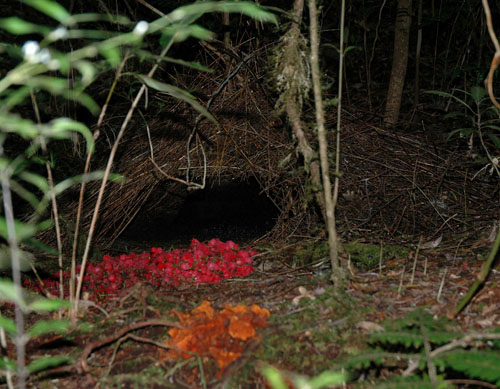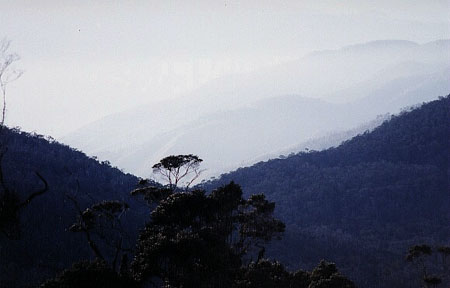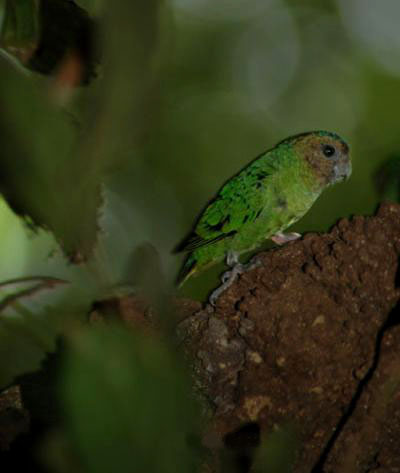Welcome to Papua
  
Just north of Australia lies New Guinea, the world’s largest and highest tropical island, and one of the largest remaining areas of tropical rainforest wilderness. Occupying less than 0.5% of the earth’s surface, New Guinea holds up to 10% of its terrestrial biodiversity.
The island is home to about 725 bird species, which include some of the most beautiful and exciting birds on the planet: almost all of the amazing birds of paradise and bowerbirds, all three of the huge flightless cassowaries, the largest pigeons and smallest parrots in the world, and the majority of the mound-building megapodes. The extraordinary mammal fauna includes the bizarre egg-laying echidnas or spiny anteaters, as well as many tree kangaroos and other marsupials. There are also 400 species of amphibians, 455 butterflies and at least 20,000 plant species. Much of this rich biodiversity is due to its numerous mountain ranges, which include the permanently snow-capped Carstensz Pyramid (Puncak Jaya), the loftiest summit (4,884 m) between the Himalayas and the Andes.
The island’s high biodiversity is mirrored by the ethnic and cultural diversity of its human inhabitants. Archaeological evidence suggests that humans have inhabited New Guinea for 60,000 years. Today, the island is home to around a thousand distinct tribal groups, with 770 separate languages - about one third of the world’s total, making it by far the most linguistically diverse place on earth.
New Guinea is politically divided into two nations. The eastern half is the independent nation of Papua New Guinea (PNG). The western half of the island comprises the Indonesian provinces of Papua and West Papua (collectively formerly known as Irian Jaya) where 657 bird species are known to occur, 38 of which are found only in these provinces (i.e. endemics). However, as recently as 2005, two new species of birds were found in the remote Foja Mountains of north-eastern Papua, and more are surely to be discovered in the Papuan realm.
PBC offers tours to five distinct areas within this exciting part of the earth, each with their own endemic and special birds:
- Raja Ampat (West Papuan) islands. These islands are the home of three endemics, comprising the exquisite Wilson’s Bird of Paradise, with its bright caerulean blue bare crown criss-crossed with fine black lines, and the crimson-plumed Red Bird of Paradise, as well as the recently re-discovered Waigeo Brush-turkey. Other birding highlights on these islands include the Western Crowned Pigeon (one of the trio of New Guinea crowned pigeons - the world’s largest pigeons), Pheasant Pigeon, Palm Cockatoo, Great-billed Parrot and Moluccan Red Lory.
- Arfak Mountains, West Papua. Arguably Papua’s premier birding region, the Arfaks support 9 endemic bird species (and a further 11 species with restricted ranges), of which the most famous must be the Vogelkop Bowerbird - the world’s greatest avian architect. Males of this amazing species build a roofed house-like construction at the base of a sapling tree, inside and in front of which they place colourful berries and flowers, and insect parts, to attract females. You will also see the exciting Western Parotia (or Six-wired Bird of Paradise), males of which perform a bizarre side-step dance on the floor of their display courts, while their flank plumes are spread to form a circular skirt, and their six wiry antenna-like nape feathers directed forwards. Two other endemic birds of paradise are commonly seen here at higher altitudes (almost 2,000 m) - the little-known Arfak Astrapia and Long-tailed Paradigalla (rediscovered in 1989), as well as the more widespread Black Sicklebill with its 80 cm-long tail. Lower down, the Magnificent bird of paradise may be seen on his court, displaying, in sequence, his iridescent carmine back, dark green breast shield, and sulphur-yellow cape, before jerkily dancing up and down a vertical sapling, whilst quivering his cocked sickle-shaped central tail feathers. Up to seven species of robins may be seen on the mountain trail, as well as the Spotted Jewel-babbler, and if you are lucky, a Feline or a Mountain Owlet-nightjar.
- Nimbokrang, Jayapura region. This transmigration settlement lies below the Cyclops Mountains, only 65 km from Papua’s capital, Jayapura, and is an ideal base to explore the alluvial forest for lowland forest birds. Two of our main targets here are the elusive and little-known Pale-billed Sicklebill, which is restricted to the lowlands of coastal northern Papua and northwesternmost PNG, and the more widespread but spectacular Twelve-wired Bird of Paradise. The male of the latter displays his brilliant yellow flank plumes and rose-pink legs while singing atop a dead tree stump, and if a female appears, jerkily moves up and down with his black breast shield expanded. Lesser Bird of Paradise and Glossy-mantled Manucodes are also common here, and parrots such as the Pesquet’s (Vulturine) Parrot, Brown and Black-capped Lories and Buff-faced Pygmy-parrot, abound. Blue-black and Hook-billed Kingfishers are also a good chance here.
- Lake Habbema, Snow Mountains. Part of the Central Highlands that run through the length of New Guinea, these mountains are home to three endemic species, with another 33 shared with other parts of the Central Highlands. In the alpine grasslands surrounding Lake Habbema at 3,200 m above sea-level, we should see the Snow Mountain Munia, Alpine Pipit and with luck, Snow Mountain Quail. In the shrubland and pine-dominated montane woodlands nearby, we should see the endemic Orange-cheeked and Short-bearded Honeyeaters, although the real star here is the enigmatic MacGregor’s Bird of Paradise (now regarded as a honeyeater) , a striking black bird with large semi-circular golden wattles surrounding the eyes, and bright ochre wing patches. Lower down on the trail to Beneme, look out for other high altitude species such as Crested Berrypecker and Black Sittella.
- Biak-Supiori Islands, Geelvink Bay. These lovely small islands host no fewer than 12 endemic species, including the Biak Paradise-Kingfisher, Biak Coucal, and Biak Red Lory, as well as the range-restricted Geelvink Pygmy-parrot.
|

